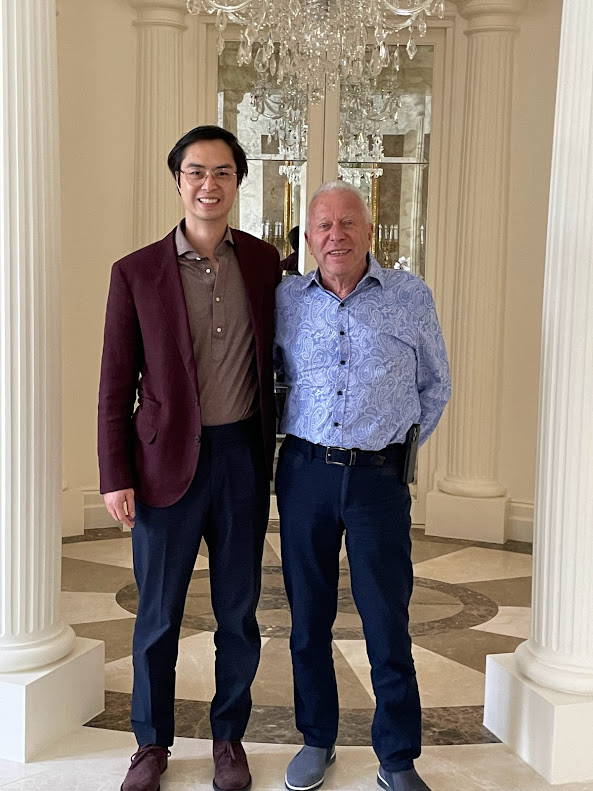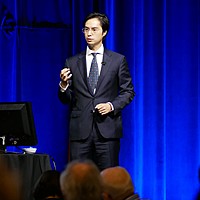Founder Interview: Lessons from the founder of Chemist Warehouse (Part 1)
Jack Gance is a rare entrepreneur who’s created not one but two dominant market leaders from scratch. He built Australia’s leading pharmacy retailer, Chemist Warehouse, after founding and ultimately selling Le Specs, one of the top brands in fragrances, cosmetics, suntan lotion and sunglasses. Throughout my interview with Jack, he sprinkles lessons in getting businesses off the ground with limited capital, on how to create and extend strategic advantages, building businesses over a long horizon, as well as the importance of making fair deals with suppliers.

GETTING YOUR FOOT IN THE DOOR
Within the opening few minutes of our interview, it becomes apparent Jack chooses to take calculated risks in areas where he has a strategic advantage. ‘What exactly do you define as a strategic advantage?’ I ask. In a matter-of-fact tone, Jack explains it’s about getting yourself into unfair fights.
For example, the Le Specs sunglasses business was launched as a pharmacist-to-pharmacist wholesaler. Jack and his brother Sam were themselves qualified pharmacists with their own established pharmacies. Jack had the insider’s advantage of being a relatable colleague familiar with how pharmacists should position the product. Jack was able to distinguish Le Specs, which had a unique feature of being unbreakable, from the hundreds of other sunglass products and distributors to garner the support of fellow colleagues.
The insider’s angle combined with a unique product proved to be enough of a differentiator to give Jack the leg-up he needed. He knew how to price the sunglasses, and he could coach his sales team on how to maximise sales.
A story he recalls involves a time when he would ask pharmacists to step on the sunglasses to demonstrate why they would appeal to the masses. He would also encourage them to repeat this in front of customers – a way to grab their attention.
Combined with the attractive wholesale prices, Le Specs was an immediate success. And as any founder would, Jack pressed on further with an innovative marketing deal which would propel the brand on a national level.
GETTING THE FIRST BREAK WITH LIMITED CAPITAL
Jack recalls approaching an advertising agency in 1979 to propose a unique marketing deal (at the time he didn’t have the capital to invest large amounts into advertising). Instead of Le Specs giving the agency a large upfront fee, the agency would receive a percentage of sales. In return they would help brand, launch and create the advertising for the product. Jack won them over by ‘throwing the sunglasses on the ground and stepping on them’ – to demonstrate the uniqueness of the product.
The deal incentivised the advertising agency and it went above and beyond to promote the product, finding extra TV marketing slots for Le Specs that otherwise would not have been filled. A year later, Le Specs expanded nationally, having established itself as the market leader in tough and affordable sunglasses.
The marketing deal allowed Jack to limit his initial capital outlay, de-risk the venture and create an incentive structure with the advertising agency that would allow Le Specs to gain national brand recognition.
By the time competitors started entering a year later, Le Specs had already established a substantial lead in market share and support from customers. As Jack says, ‘the advertising deal gave us the break we needed to kickstart our operations’.
Minimise initial risk and capital outlay, gain a foothold and expand your strategic advantage over time – this is the modus operandi that would resonate through Jack’s career.
EXPANDING YOUR STRATEGIC ADVANTAGE
As more competitors entered the market, Jack had to secure exclusive distribution agreements from the French manufacturer. On one trip, he flew to Lyon to meet the manufacturer to convince them he should be the sole distributor in Australia of its unbreakable sunglasses. Exclusivity helped to temporarily prolong Le Specs’ first mover advantage, crucial in the early stages of the business. Over time, more manufacturers appeared but Jack could only secure exclusivity deals with so many. He could see Le Spec’s strategic advantage was under the microscope of its competitors, soon to be studied, dissected, and replicated. But Jack had other ideas to broaden his business. He was already thinking about the next horizon – In his mind the key question was:
Is Le Specs a sunglasses business, or is it a distribution business?
With the leading brand name and national sales channels, Jack saw Le Specs as a distribution business first, which just so happened to sell sunglasses. And with this conclusion, the way he needed to expand his strategic foothold was to sell another product to his customers.
It was Jack’s intention to diversify into a winter-orientated product to balance out the summer-heavy sales of sunglasses, but he struggled to think of any promising ideas. Instead of taking a dogmatic approach, Jack went with developing another summer product – suntan lotion. Yes, it meant his sales profile was heavily tied to the summer season, but suntan lotion had the advantage of being an easier sell. Jack’s orchestrated sales process made sure every salesperson pitched a bottle of suntan lotion at the same time they sold a pair of sunglasses. The lotion was branded Le Tan, designed to ride off the positive branding of Le Specs. It worked. Sales grew organically as the product range expanded.
With the self-clarity of knowing he was running a distribution business, not a sunglasses or suntan lotion business, there was an impetus to keep rolling out new products. The next idea was the perfume market, which was a much larger market and traditionally sold through department stores, not pharmacies.
This led to the acquisition of Australis, a brand which had historically struggled to grow. The reason, in Jack’s view, was because Australis’s branding was competing head on with fragrance brands like Chanel and Dior. The branding was too serious; Australis would always lose in a battle for sophistication. Instead, Jack emphasised the need for products to create a ‘smile factor’ – he was going to counter the strategic advantage (and million-dollar marketing budgets) of the well-established European brands, with a fun factor with which they could not compete. He commissioned artwork from Ken Done and progressively launched variants of Australis products each year. Australis was followed by Australis for Men, which was followed by Love Is Australis. Sales volumes were stable each year, but the growth came from expansion of new product lines.
Jack gestures the size of each market to me. ‘The sunglasses business is this big, the suntan lotion business is this big, the perfume market is this big,’ his hands widening as he describes each market. And finally, he describes his eventual move into cosmetics and widens his hands even further. ‘And that’s why I decided to move into the cosmetics market with Colours of Australis, which is this big.’
With each product launch, Le Specs’ offering broadened. Concurrently to the growth of the distribution business, Jack and his brother Sam would simultaneously expand their footprint of pharmacies which went from 2 stores to 35 while the distribution business was expanding in its own right. This chain of stores would eventually be branded as the MyChemist chain of pharmacies. The hidden benefit of running both a distribution business and a chain of pharmacies was the inside knowledge of which products sold best. The pharmacies owned by Jack were used as testing arenas for different colours of eye shadow, lipstick and makeup – once demand was established, the new line would be sold externally to other pharmacies.
FINE TUNING THE OPTIMAL BUSINESS MODEL
There are businesses that face more structural headwinds than others. For example, some businesses generate revenue on a per hour basis, which naturally limits how truly scalable the model can be. That is not to say these businesses cannot be profitable and successful, but they face greater challenges and are more vulnerable to adverse market conditions. This was the nature of Jack’s distribution business.
As revenues grew, the working capital required to manufacture and pre-order the sunglasses, suntan lotion, cosmetics and fragrances snowballed. This business model required a large outlay of cash each year, with cash sales received sometimes up to one year later. There would be a build-up of debtors over the year. Compounding this headwind were the banks, who offered working capital financing but required a personal guarantee from Jack and Sam. The larger the business grew, so too did the working capital outlays. It made Jack uncomfortable knowing that he was personally vulnerable to any unforeseen changes in market conditions.
In 1990, twelve years after he started the Le Specs brand, Jack received an offer to sell his business. He and Sam didn’t hesitate to accept, knowing the buyer had much deeper pockets to absorb the working capital requirements. At the time of the sale, Le Specs, Le Tan and Australis business were one of the largest cosmetic distributors in Australia.
The experience gained from the distribution business would serve Jack well in years to come. Jack and Sam had a group of 35 pharmacies in various partnerships and re-focused on growing those to 50 stores. It would be the early formation of what would become Chemist Warehouse – the second phase of Jack’s career and his biggest success. It would become a pharmacy brand that would dominate the Australian market.
***
Part 2 of this feature will be published next week
2 topics

